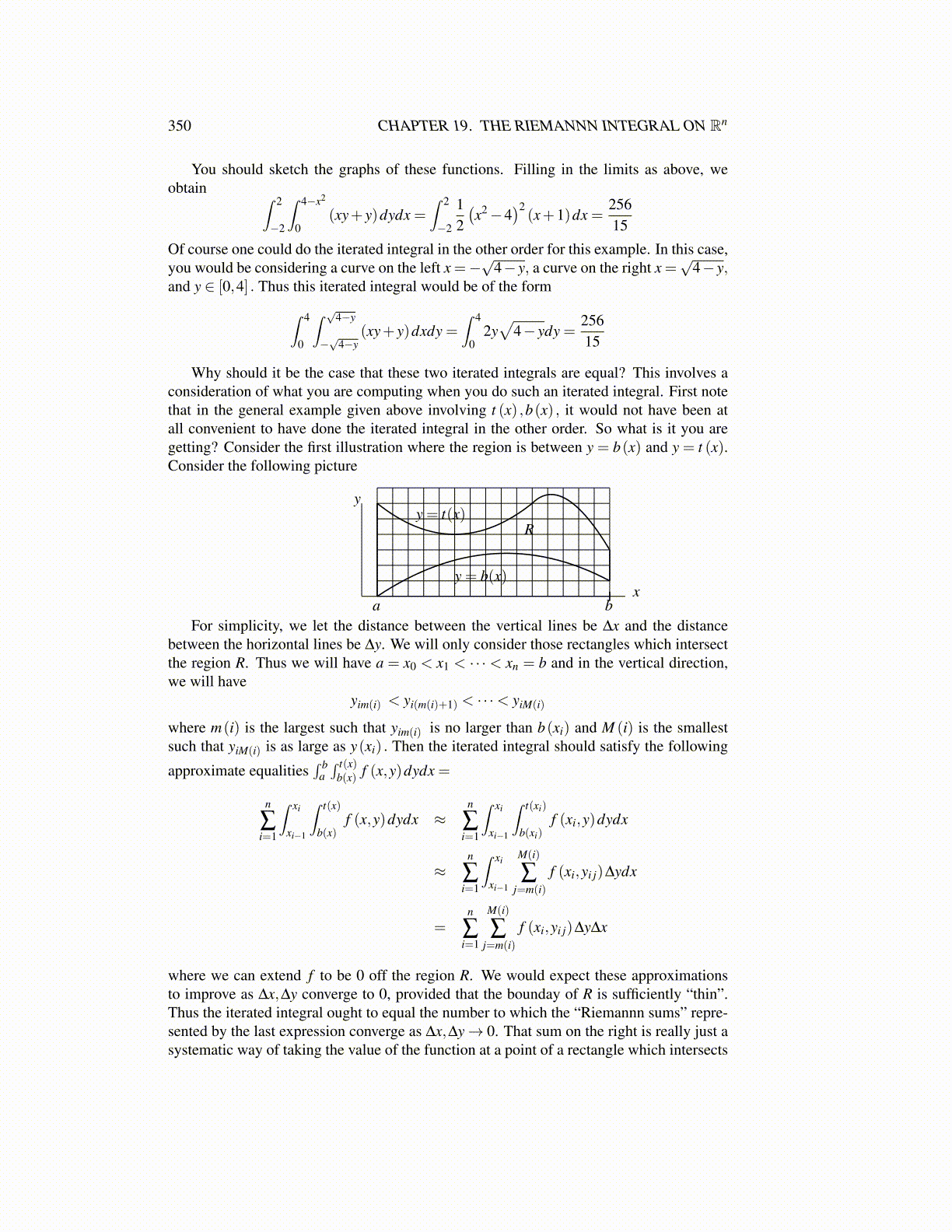
350 CHAPTER 19. THE RIEMANNN INTEGRAL ON Rn
You should sketch the graphs of these functions. Filling in the limits as above, weobtain ∫ 2
−2
∫ 4−x2
0(xy+ y)dydx =
∫ 2
−2
12(x2−4
)2(x+1)dx =
25615
Of course one could do the iterated integral in the other order for this example. In this case,you would be considering a curve on the left x =−
√4− y, a curve on the right x =
√4− y,
and y ∈ [0,4] . Thus this iterated integral would be of the form∫ 4
0
∫ √4−y
−√
4−y(xy+ y)dxdy =
∫ 4
02y√
4− ydy =25615
Why should it be the case that these two iterated integrals are equal? This involves aconsideration of what you are computing when you do such an iterated integral. First notethat in the general example given above involving t (x) ,b(x) , it would not have been atall convenient to have done the iterated integral in the other order. So what is it you aregetting? Consider the first illustration where the region is between y = b(x) and y = t (x).Consider the following picture
R
a b
y = t(x)
y = b(x)
y
x
For simplicity, we let the distance between the vertical lines be ∆x and the distancebetween the horizontal lines be ∆y. We will only consider those rectangles which intersectthe region R. Thus we will have a = x0 < x1 < · · · < xn = b and in the vertical direction,we will have
yim(i) < yi(m(i)+1) < · · ·< yiM(i)
where m(i) is the largest such that yim(i) is no larger than b(xi) and M (i) is the smallestsuch that yiM(i) is as large as y(xi) . Then the iterated integral should satisfy the following
approximate equalities∫ b
a∫ t(x)
b(x) f (x,y)dydx =
n
∑i=1
∫ xi
xi−1
∫ t(x)
b(x)f (x,y)dydx ≈
n
∑i=1
∫ xi
xi−1
∫ t(xi)
b(xi)f (xi,y)dydx
≈n
∑i=1
∫ xi
xi−1
M(i)
∑j=m(i)
f (xi,yi j)∆ydx
=n
∑i=1
M(i)
∑j=m(i)
f (xi,yi j)∆y∆x
where we can extend f to be 0 off the region R. We would expect these approximationsto improve as ∆x,∆y converge to 0, provided that the bounday of R is sufficiently “thin”.Thus the iterated integral ought to equal the number to which the “Riemannn sums” repre-sented by the last expression converge as ∆x,∆y→ 0. That sum on the right is really just asystematic way of taking the value of the function at a point of a rectangle which intersects